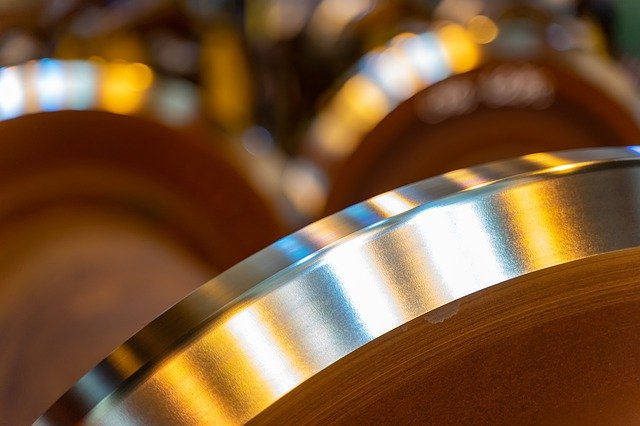For iron and steel production, refractory materials are important. Various types of refractories are used for the lining of furnaces for smelting, processing, and transport operations in ironworking and steel making processes at steel mills. If the damage to the refractory lining of the oven is made to avoid the stable operation of the oven, the refractory lining is broken down and discarded. The pressure to reduce the number of waste refractories in the iron and steel industry has risen over the last few years.
In order to minimize the refractory amount of waste, its intake by extending the life of the furnace linings needs to be decreased. On the other hand, the efficient use of refractory waste has become increasingly necessary. Around two-thirds of the refractory supply is used by the steel industry. The refractory material which remains after use is estimated to be 30 percent of the material used. In other words, about 9 million tons of refractories are eligible for recycling or refilling per year.
Recycling issues with used refractories
A refractory recycling scheme that allows waste refractory material that accumulates in its steelworks on an everyday basis to be effectively re-used in steelworks as resources instead of only sending them out as roadbed material or waste disposal outside of steelworks. However, there is the risk of wear resistance inadequate for refractory lining made from recycled material, when it comes to recycling waste refractory in steelworks, due to the combination of impurities such as slag, base metal, and other mixtures with waste refractories. The success or failure of refractory waste recycling, therefore, depends on the probability of complete clean-up of degraded elements or impurities.
Technologies Needed to Recycle Refractory Waste
Technology for Pre-treatment
- Used refractories are stored, categorized, and classified: A variety of different types of refractory in different parts of the furnace are used for each furnace. The old refractories torn from the oven are a blend of various kinds of refractories. It is therefore unwanted to merely collect and use them directly as recycled material from a refractory quality control point of view. Therefore, they are sorted and graded as MgO refractory, Al2O3 refractory, carbon-refractory, and carbon-free refractory, etc. when old refractories are torn down. Even those refractories, as noted above, which have been classified and categorized can contain various types and large iron and slag pieces mixed into them. In this case, they must be broken down using heavy-duty equipment and manually or magnetically separated from various types of refractories and iron and slag sections. The old refractories are then crushed approx. into 200 to 400mm bits, so that the subsequent crushing/pulverization steps allow them to be processed easily.
Technology for regenerating old refractories collected
- Improving crushing/pulverization quality: The refractories are crushed and pulverized in order to remove minute impurities from the old refractories collected as described above and to render the refractory particles to a uniform size. In order to reduce the refractory particle size, impact energy or compressive energy is used depending on the size and type of refractory. Now, the old refractories that were crushed and pulverized for easy distribution and addition to monolithic refractory at the worksite have been bagged. It doesn’t matter much if they contain water when recycled refractories are added to monolithic refractory when being combined with water. However, when recycled refractories are pre-mixed with monolithic refractory in the form of dry powder, they need to be packed in bags to avoid moisture from being absorbed.
- Disposal of iron and slag: Magnetically, iron is extracted from refractory waste by different techniques. The best way to eliminate refractory iron waste is to use an iron-separation system magnetic suspension-type that has proven its effectiveness in moving iron parts from cement, glass, and coke materials.
A color-based sorting system can be utilized for the removal of slag. The device uses air pressure to sort materials with clear black-and-white contrast. It has demonstrated its success in extracting grain and other foreign substances from cereals, beans, and other food. The machine is particularly useful for the removal of the dark black iron pieces and slag from the light white recycled brick Al2O3.
- Management of particle size: It is best sorted and handled according to particle size when it comes to reusing recycled refractories crushed, pulverized, and cleansed from iron and other impurities. Used for the classification are ordinary metallic mesh sieves. Mesh sizes have been decided for classification purposes. The largest mesh sieve is placed at the top and the smallest at the ground level and the intermediate mesh sieve is in order of mesh size between them. Because refractory waste is constantly loaded into the collection of sieves, large volumes of refractories can be classified by the constant vibration of the sieves.
- Measurements against dust controls: In the process of grinding, pulverizing, and classifying waste refractories to be recycled, dust is an integral element. This dust presents a challenge for the environment. All the equipment used in the above phase is therefore fully covered in order to prevent the dust produced from spreading around. In addition, to eliminate the dust, a dust-collecting device is installed. Dust is processed in a way suitable to the form of refractory waste that is to be recycled. Collected dust is primarily used as a raw material for landscape bricks that contribute to the aesthetic appeal of parks and as flowerbed retainers in gardens, etc.
Refractory manufacturing with recycled material
If a recycled material in the mixing phase at the construction site is applied to the monolithic refractory, it does not need to be dried. There are some recycled materials, such as those used for shot repair, which are pre-mixed with monolithic refractory and installed on the construction site in a tank for the shot repair system. In this case, if the recycled material contains any moisture, there is a clear risk that it may harden by reacting with cement & raw material while in storage. Therefore, if a combination of monolithic refractory material and recycled material is processed for several hours prior to use, the recycled material must be dried before combining with the monolithic refractory material.
Conclusion
Reuse and recycling of iron and steel refractories, powered by regulatory and economic aspects are increasingly in demand. Some corporations have completed the maximum reduction of waste in their own or external lands. Progress in this direction includes a good commitment and a long-term continuance.












